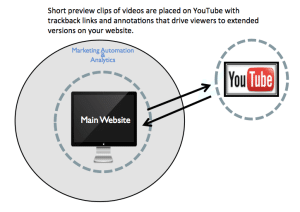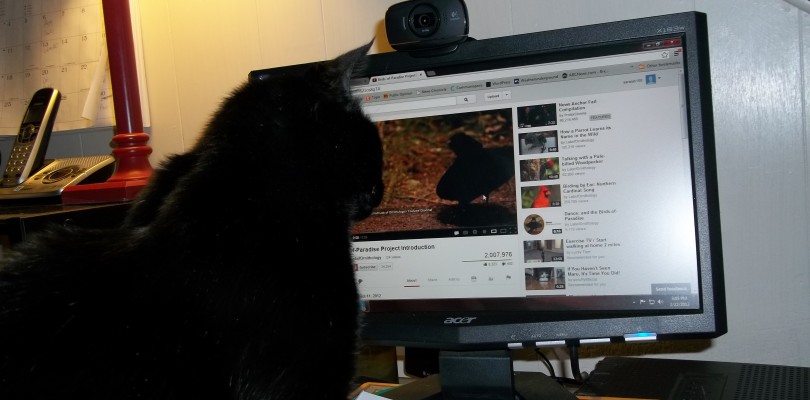Now that video marketing is starting to mature, it is becoming increasingly clear the role YouTube plays. If you are like most companies I speak to on a daily basis, you probably using YouTube’s capabilities, specially for hosting and distributing video. But, what you may not know is how to use YouTube’s power to drive key results for your marketing efforts.
In this article we are going to explore a few strategies companies are using with YouTube and video platforms to host and market their content. Each strategy has its own benefits and downfalls. See if you identify with any one of them.
1. All my company’s video content is hosted on YouTube
Does your company put all it’s eggs in one basket when it comes to online video? If that answer is yes, then you probably host your videos on YouTube. Maybe you have gone as far as customizing your channel and organized videos into playlists. Then if you needed video on your website, you created embeds and placed them strategically on pages to support existing content there. If you wanted something more custom, you could leverage YouTube’s APIs and build a custom player or gallery.
your company put all it’s eggs in one basket when it comes to online video? If that answer is yes, then you probably host your videos on YouTube. Maybe you have gone as far as customizing your channel and organized videos into playlists. Then if you needed video on your website, you created embeds and placed them strategically on pages to support existing content there. If you wanted something more custom, you could leverage YouTube’s APIs and build a custom player or gallery.
Your video is out there and people are watching the content, you are using it in email campaigns and all across your website. The sales team is sharing the links with prospects and the customer success team are using it to provide automated support with tutorials and help content. To make the YouTube powered video more effective, you optimize the embeds for SEO and build a video site map so your video starts ranking in organic search.
If this sounds like your strategy, then you are like most companies adopting video. Read on to see what others might be doing with their YouTube strategy and then we will tie it all together at the bottom of the article.
2. My company has a YouTube channel where we host video but we also have the same content hosted with a premium provider on our website.
Has your company adopted premium video technology along with YouTube to create a combined experience? You have a dedicated program around creating video content and you host redundant libraries of videos on both YouTube and your premium provider. In the case that you are cost sensitive you may only host a smaller portion of videos with your premium video platform and the rest on YouTube.
You are not concerned about duplicate content being hosted both on YouTube and your website, because you have not put that much thought into your strategy yet as it relates to SEO. Your videos have descriptions but no optimization strategy, and no links back to your website directly from YouTube videos.
Your with your premium video provider to get video analytics or to connect video to your marketing automation platform or CRM. The intelligence you get from those videos is used to prove ROI for all video content development. With all this success with the premium solution, YouTube just becomes a repository for your content with no strategy.
3. My company hosts most of our video content on our website with a premium provider and we have short clips of that content uploaded to our YouTube channel.
 Has your company started optimizing distribution of content across social networks? You have a dedicated social media person and program that overviews and manages syndication across channels. Your team is creating snippets or short descriptions of content for sharing, so they do the same with video, creating preview clips to be placed on YouTube and Facebook.
Has your company started optimizing distribution of content across social networks? You have a dedicated social media person and program that overviews and manages syndication across channels. Your team is creating snippets or short descriptions of content for sharing, so they do the same with video, creating preview clips to be placed on YouTube and Facebook.
Your company’s goal with social syndication is awareness and the opportunity to drive traffic back to controlled viewing experiences with clear conversion opportunities. You take the short preview clips for YouTube, upload them, apply appropriate metadata and optimize with links back to the extended version on your website. Utilizing interactivity, you place YouTube annotations in the videos so the viewer can click through to your website.
Once the viewer has clicked through from YouTube and is on your website watching the rest of the video, you pop up a form in the video and convert the viewer to a known contact with your marketing automation platform. You track their engagement with video content, passing valuable information to your sales team via their CRM, sales follows up and a deal is closed.
So there you have it! Which example best represents your business and where you want to go next? Use this guide as a starting point as we will go into further detail in future posts. To get more tips like this please subscribe to our newsletter.


